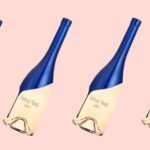Residual sugar in wine is a subject often overlooked by connoisseurs.
Yet it plays an essential role in the flavor and balance of wines. Some wines are deliberately sweeter, while others retain a slight sugar content due to the winemaking process. So why do some wines contain more sugar than others? Let's decipher the secrets of sweet wines and wines made from stopped fermentation.
What is residual sugar in wine?

Residual sugar in wine refers to the natural sugars in the grapes that have not been fully converted into alcohol during fermentation. Depending on the type of wine, the winemaker may choose to leave more or less residual sugar.
- Dry wines: almost all the sugar is converted into alcohol.
- Semi-dry wines: a small amount of sugar is retained.
- Sweet and syrupy wines: partial fermentation leaves a higher sugar content.
This sugar has a direct influence on the taste of the wine, adding a touch of sweetness that varies according to grape variety and winemaking technique.
Why do some wines contain residual sugar?
There are several reasons why a wine retains a certain amount of sugar after fermentation.
1. Voluntary stop of fermentation
In some cases, the winemaker deliberately interrupts fermentation to maintain a balance between alcohol and sweetness. This method is used for sweet and syrupy wines.
- Cooling the must: fermentation is stopped by lowering the temperature.
- Addition of sulfur: sulfur inhibits yeast activity, preventing the total transformation of sugar.
- Mutage à l'alcool: the addition of alcohol stops fermentation (e.g. natural sweet wines such as Muscat).
These techniques enable us to produce well-balanced wines, rich in aroma and natural sugar.
2. Grape varieties naturally rich in sugar
Some grape varieties have a higher sugar concentration, resulting in naturally sweet wines.
- Riesling and Gewurztraminer: frequently used to produce sweet wines.
- Sémillon and Chenin Blanc: perfect for making sweet wines.
- Muscat: renowned for its fruity aromas and natural sweetness.
The choice of grape variety therefore plays a decisive role in the residual sugar content of a wine.
3. Effect of noble rot
Noble rot is a phenomenon that concentrates sugars in grapes thanks to a fungus called Botrytis cinerea. This process is typical of great sweet wines such as Sauternes or Tokaji.
- The water in the grapes evaporates, concentrating sugars and aromas.
- Wines produced using this technique are very rich in natural sugar.
This process is sought after to produce exceptional wines.
4. Late harvesting and sugar concentration
Sweet wines can be produced thanks to late harvests, when the grapes stay on the vine longer. This allows :
- Natural concentration of sugars thanks to grape dehydration.
- A development of intense aromas and a beautiful roundness on the palate.
This process is used in Alsace, in the Loire and in certain regions of Italy and Germany.
Residual sugar in different types of wine
Residual wine sugar varies according to wine category.
1. Dry wines (less than 4 g/L residual sugar)
These wines ferment completely, converting almost all the sugar into alcohol.
- Examples: Sauvignon Blanc, Chardonnay, Cabernet Sauvignon.
- Characteristics: pronounced acidity, fresh mouthfeel.
2. Semi-dry wines (4 to 12 g/L residual sugar)
They retain a slight sweetness, offering a balance between sweetness and freshness.
- Examples: Chenin demi-sec, Pinot Gris d'Alsace.
- Caractéristiques: perfect for exotic and slightly spicy dishes.
3. Sweet wines (12 to 45 g/L residual sugar)
These wines are deliberately sweet, often made from late harvests or grape varieties rich in sugar.
- Examples: Sauternes, Montlouis, sweet Vouvray.
- Characteristics: well rounded, with aromas of honey and candied fruit.
4. Sweet wines (over 45 g/L residual sugar)
The sweetest wines, rich in aroma and perfect for dessert.
- Examples: Tokaji, Muscat de Beaumes-de-Venise, Jurançon.
- Characteristics: aromatic intensity, long persistence on the palate.
The impact of residual sugar on food and wine pairing
Residual sugar has a strong influence on food and wine pairings. A mellow or slightly sweet wine is ideal for certain dishes.
- Spicy dishes: off-dry wines balance spiciness.
- Blue-veined cheeses: a sweet wine enhances their intensity.
- Fruity desserts: a sweet wine complements sweet flavors.
The important thing is to balance the sweetness of the wine with that of the dish to avoid it appearing too bland or too sweet.
Should you avoid wines with residual sugar?
Residual sugar is often misunderstood as being associated with overly sweet or entry-level wines. Yet it plays a fundamental role in the aromatic balance of many quality wines.
- Sweet wines are perfect for certain gourmet pairings.
- A slight residual sugar can soften the acidity and add roundness.
- Choosing the right sweet wine depends on mastering balance.
Residual sugar is therefore not a defect in itself, but a key element in some great wines.
Conclusion
Residual sugar in wine is the result of technical choices made by the winemaker, the grape variety or climatic conditions. Whether dry, sweet or syrupy, this sugar plays a key role in the wine's flavor and balance. Sweet wines, made from stopped fermentation or late harvesting, offer unrivalled aromatic richness.
If you enjoyed this article, don't hesitate to read the following article "How to plan a wine cellar for champagne lovers", which might also interest you!





